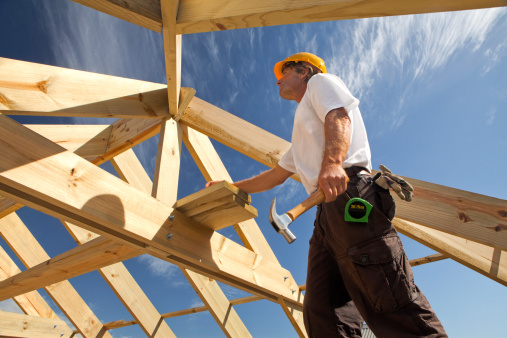If you are thinking of building your own home you probably have plenty of ideas about the design, style and materials. But do you know how you are going to fund the project? ESBS offers some advice on self-build mortgages.
 When many people think of self-build projects, they dream of an elaborate, Grand Designs-style venture that’s as audacious as it is costly.
When many people think of self-build projects, they dream of an elaborate, Grand Designs-style venture that’s as audacious as it is costly.
While this may well be the case in some instances, it’s important to remember that plenty of people undertake their own, more modest projects also – and financing the plan can be one of the biggest challenges either way.
Therefore, we’ve put together the following list of top tips to help guide people through the process of applying for a self-build mortgage.
The advantages of building your own home
There are a number of advantages to taking out a self-build mortgage when building your own home.
These include the prospect of saving thousands on the cost of Stamp Duty, seeing as this doesn’t need to be paid against the cost of the building work, nor the property’s value once the work is finished.
You are only required to pay Stamp Duty on the cost of the land itself if this exceeds £125,000 (£300,000 for first-time buyers)
Self-build projects can also bring financial gains with them as people might find that their completed property is more valuable than the cost of construction, and often it’s the case that this is cheaper than buying a home.
Make sure your project meets the criteria
To apply for a self-build mortgage, it may be required that that the project qualifies against a number of points.
For example, the property might need to be detached and for your own, residential use rather than for commercial purposes, which includes letting out to tenants.
For the main part, the property might also need to have been built with conventional construction materials as this will make the property more mortgageable during and after the build, which helps to improve the valuation.
Furthermore, the property would almost certainly require a suitable warranty or have supervision from a suitably qualified architect or professional consultant.
You will need to check the planning conditions carefully, especially as some permissions are granted but only with an agricultural tie clause or a Section 106 occupancy clause. An agricultural tie clause is a restriction in the land’s deeds which usually requires that the purchaser either works in agriculture or has done in the past.
A Section 106 occupancy clause is also a restriction, but this applied by a local planning authority. An example of such a restriction is that the house can only be occupied by a person with a local connection.
Such clauses would restrict the market and/or the valuation, and the number of lenders who would be able to assist.
Budgeting and cashflow are key
When applying for a self-build mortgage, the lender will need to know how much you anticipate the project is going to cost.
You will also need to make sure that you are able to afford somewhere to live in the meantime. Living on-site in a caravan, or moving in with family, may be a good way of keeping costs down, and will also motivate you to get the build done as quickly as possible!
What’s more, it is probable for your monthly mortgage payments to be interest-only, if required, until completion of the works and you move in.
In all instances, you will likely need to access savings in order to part fund the project, so it’s important to ensure that they are not locked up.
Have all the essential paperwork ready
Having all the appropriate documentation ready is an absolute must when applying for any mortgage, but especially a self-build one.
These include a site map showing where the property will be built, floorplans detailing the size and layout of the building, a rundown of the associated costs as well as valid planning permission. Often these are now easily available to view and download from the Local Authority’s web planning portal.
The process can take some time to complete, so you will need to be clear about everything, including the people and materials being used, for it to go as smoothly and quickly as possible.
Make an overall assessment
During the build itself, you will also need to have appropriate construction insurance, with full property insurance established upon completion and occupation.
As building works can go on for 12 months or longer, it’s important to take stock of the situation by also speaking to an expert about your mortgage once the work is completed to see how your mortgage can be rearranged.
To find out more about applying for a self-build mortgage with us, visit www.esbs.co.uk/self-build-mortgages.














